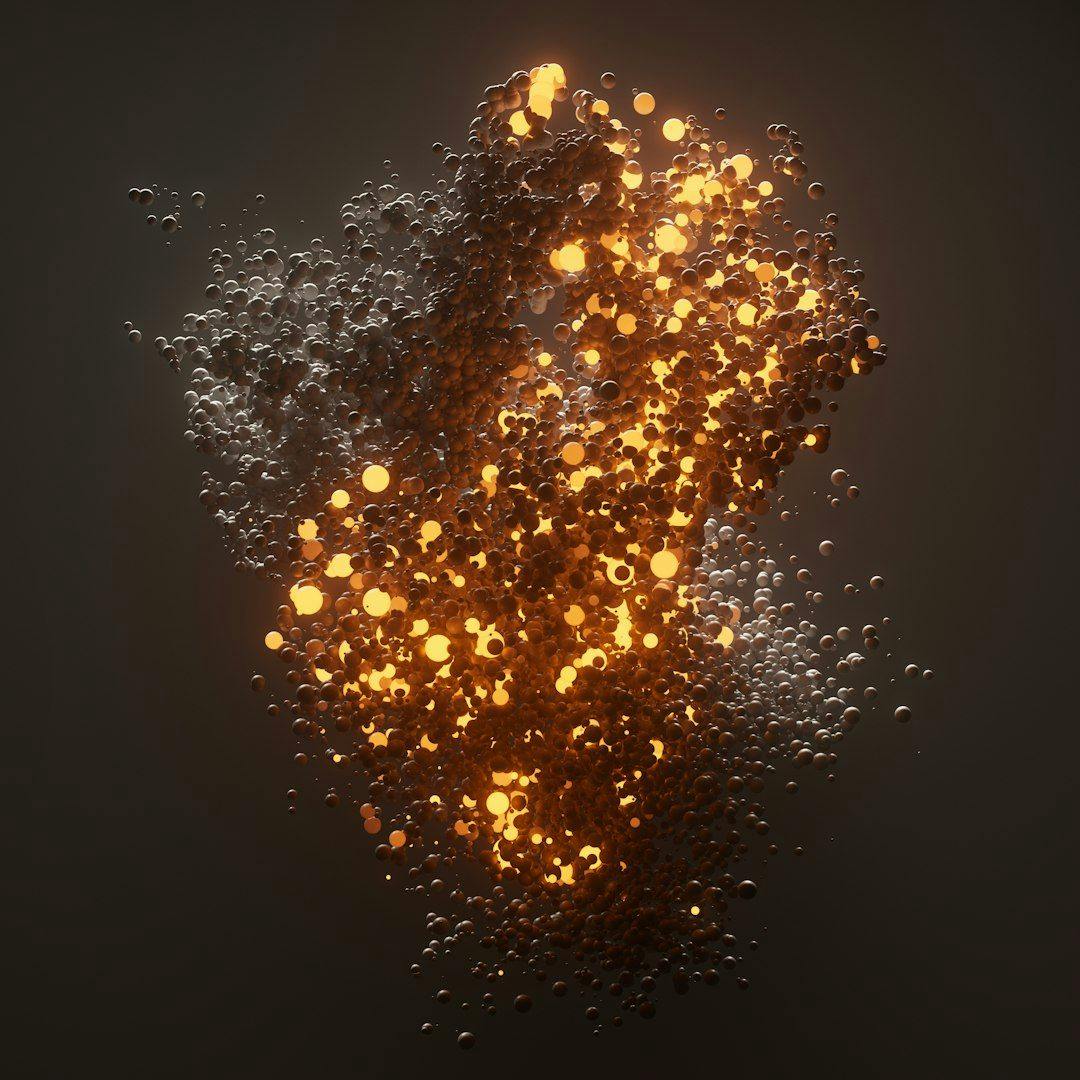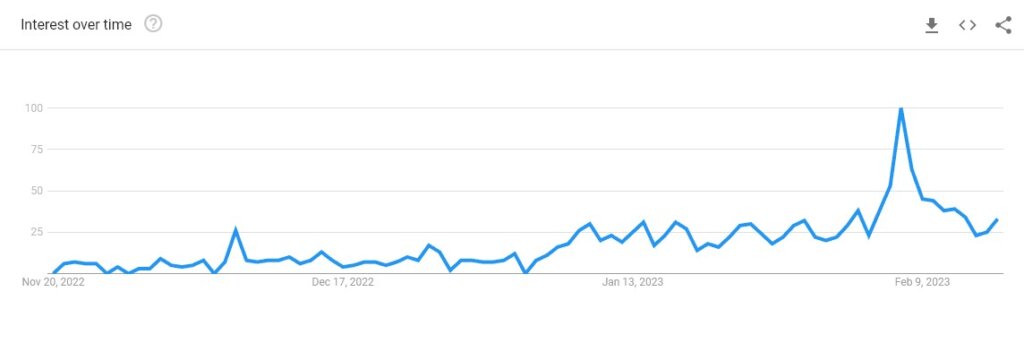Anatomy of a Crypto Catastrophe: The Science Behind Terra’s $40 Billion Implosion

Authors:
(1) Antonio Briola, Department of Computer Science, University College London, Gower Street, WC1E 6EA – London, United Kingdom and UCL Centre for Blockchain Technologies, London, United Kingdom;
(2) David Vidal-Tomas (Corresponding author), Department of Computer Science, University College London, Gower Street, WC1E 6EA – London, United Kingdom, Department of Economics, Universitat Jaume I, Campus del Riu Sec, 12071 – Castellon, Spain and UCL Centre for Blockchain Technologies, London, United Kingdom ([email protected]);
(3) Yuanrong Wang, Department of Computer Science, University College London, Gower Street, WC1E 6EA – London, United Kingdom and UCL Centre for Blockchain Technologies, London, United Kingdom;
(4) Tomaso Aste, Department of Computer Science, University College London, Gower Street, WC1E 6EA – London, United Kingdom, Systemic Risk Centre, London School of Economics, London, United Kingdom, and UCL Centre for Blockchain Technologies, London, United Kingdom.
Table of Links
Abstract and 1. Introduction
2. Data and quantitative nature of the events
2.1. Hourly data analysis
2.2. Transaction data analysis
2.3. Anchor protocol
3. Methodology
3.1. Network analysis: Triangulated Maximally Filtered Graph (TMFG)
3.2. Herding analysis
4. Results
4.1. Correlations and network analysis
4.2. Herding analysis: CSAD approach
5. Robustness analysis
6. Implications and future research
6.1. Relevance for stakeholders
6.2. Future lines of research
7. Conclusion, Acknowledgements, and References
Supplementary Material
Abstract
We quantitatively describe the main events that led to the Terra project’s failure in May 2022. We first review, in a systematic way, news from heterogeneous social media sources; we discuss the fragility of the Terra project and its vicious dependence on the Anchor protocol. We hence identify the crash’s trigger events, analysing hourly and transaction data for Bitcoin, Luna, and TerraUSD. Finally, using state-of-the-art techniques from network science, we study the evolution of dependency structures for 61 highly capitalised cryptocurrencies during the down-market and we also highlight the absence of herding behaviour analysing cross-sectional absolute deviation of returns.
1. Introduction
In one of his public declarations, Terra project’s co-founder, Do Kwon, stated that 95% of the companies entering the crypto market were going to die. Indeed, he further affirmed that there was entertainment in watching companies die (Quiroz-Gutierrez, 2022). About a week after this statement, TerraUSD (UST), the stablecoin that, according to its founders, should have been the new peer-to-peer cash system, lost its peg to the U.S. dollar (USD) and collapsed.
Before its crash, UST was the fourth-largest stablecoin behind Tether (USDT), USD Coin (USDC) and Binance USD (BUSD), with $18 billion in market capitalization (CoinMarketCap, 2022a). According to Terra’s white paper, its underlying protocol relied on a two-coin system, which was not fully backed by traditional collaterals (e.g. fiat currency or gold) (Kereiakes et al., 2019). On the one hand, Terra was the algorithmic stablecoin whose value was pegged to different fiat currencies, giving rise to fiat-based stablecoins, such as TerraUSD, TerraEUR and TerraKRW. On the other hand, Luna token[1] (LUNA) was the counterweight used to delete (or, at least, reduce) the volatility from UST. Being more specific, LUNA-UST protocol was based on two main concepts. First, the protocol stabilised UST prices by ensuring that its supply and demand were in equilibrium through arbitrage, that is, contracting (or expanding) UST pool by using LUNA pool as counterweigth. Second, through the Terra protocol’s algorithmic market module, arbitrageurs were allowed to trade $1 worth of LUNA for 1 UST, and vice versa, regardless of LUNA and UST prices (Shapovalov et al., 2022) [2].
The most famous project born inside the Terra ecosystem was the Anchor protocol, a lending and borrowing protocol used by UST holders as an high-interest savings account. Before Terra project’s collapse, Anchor attracted the 75% of UST circulating supply offering 20% annual percentage yield (APY) for depositors. Aided by its vicious dependence on the Anchor protocol, Terra project immediately appeared to be heavily exposed to extreme market conditions. On April 2022, Swiss-based crypto exchange, SwissBorg, stated that if LUNA’s price is under pressure, UST holders could be fearing that the UST peg is at risk and decide to redeem their UST positions. In order to do so, UST is burnt and LUNA is minted and sold on the market. This would exacerbate further the decline of LUNA’s price, pushing more UST holders to sell their UST. This vicious cycle is known as “bank run” or “death spiral” (Bonato, 2022). This “death spiral” effectively occurred to LUNA-UST on May 2022. Social media sources relates its origin to a “coordinated attack”, in which market actors strategically used their capital to destabilise the UST peg and generate profits (Morris, 2022). Specifically, two main events are identified as the fuse for the Terra collapse. First, private market actors short sold Bitcoin (BTC) with the final aim of spreading panic into the market (Hall, 2022; Ashmore, 2022; Locke, 2022). Second, on 07 May 2022, the liquidity pool Curve-3pool suffered a “liquidity pool attack”, which caused the first UST de-pegging, below $0.99 (Ashmore, 2022; Chainanalysis, 2022). It is worth noting that, on 01 April 2022, Kwon (2022b) announced the launch of a new liquidity pool (4pool) together with DeFi majors Frax Finance and Redacted Cartel. Consequently, funds were expected to move to the new pool, giving rise to a transitory situation in which Curve-3pool would have been more illiquid and prone to attacks. After the aforementioned “liquidity pool attack”, since 08 May 2022, Luna Foundation Guard (2022) (LFG) started to trade its reserves to restore the USD peg[3]. As a consequence of this, they were able to obtain some stability around $0.995 until 09 May 2022. On this day, due to the strong and iterated selling pressure, UST lost its peg to USD for the second and last time. On 10 May 2022, LFG sold additional reserves to defend the peg, without success (see Luna Foundation Guard, 2022) [4]. Terra reserves included a large amount of BTC, thus, according to social media rumors, attackers could have forced LFG to sell BTC on the market, decreasing its price, and increasing the attackers’ profit, whose strategy relied on short selling positions against BTC (Locke, 2022). To save the Terra project, on 11 May 2022 10:10am (UTC), Terra Team announced the endorsement of the community proposal 1164 (Kwon, 2022a), allowing a more efficient mechanism to burn UST and mint LUNA[5]. Regardless of this, community’s trust on the project was already lost, giving rise to the complete collapse of both tokens. LUNA and UST dropped from a value of $87 and $1, on 05 May 2022, to less than $0.00005 and $0.2, on 13 May 2022, respectively. Profits for potential attackers are estimated to be over 800 millions (Locke, 2022). On this point, it is worth noting that the “coordinated attack”, using BTC to destabilise UST peg, might not have happened at all, since claims of its existence are based on contradictory social media rumors (del Castillo, 2022). In other words, the attack against Terra, which started with a “liquidity pool attack” on Curve-3pool, and the potential existence of short selling positions against BTC, could have been two unrelated operations executed by different market actors.
The failure of Terra project represents an additional proof of the intrinsic fragility of algorithmic stablecoins which became already evident after the first large-scale crypto “bank run” suffered by Iron Finance in June 2021. Also Iron Finance was a two-coin system, based on an algorithmic stablecoin (IRON) and on a token counterpart (TITAN), which collapsed after the cascade selloff of TITAN due to a significant selling pressure by some “whales” (Iron Finance, 2021a). Indeed, the strategy used to bring down Iron Finance was very similar to the one potentially observable in the LUNA-UST case. More specifically, Iron Finance suffered from a “liquidity pool attack”, losing the peg to USD for a short time. Hours later, unknown market actors increased the selling pressure to spread panic, giving rise to the collapse of both IRON and TITAN (Finematics, 2021). Both projects (Iron Finance and Terra) shared a very similar blockchain framework, being prone to the same type of attacks. This duality shows that algorithmic stablecoins are prone to failure due to two main reasons. First, as stated by Clements (2021), they are built on the fragile foundation of relying on uncertain historical variables: they need a support level of baseline demand, they need participation of willing arbitrageurs, and they need an environment of informational efficiency. None of these factors are certain, and all of them have proven to be highly tenuous in the context of financial crises or periods of extreme volatility. Second, to survive a crash, algorithmic stablecoins need an intrinsic worth, i.e. there should be “genuine economic transactions” reliably performed with their tokens (Calcaterra et al., 2020). This was not the case of Terra, whose stablecoin was mainly used to obtain high interests through the Anchor protocol. On the contrary, history demonstrates that traditional fiat currencies are generally able to survive similar kind of attacks (e.g. Sterling attack in 1992, see Fratianni and Artis, 1996), since they have an intrinsic value as mean of exchange or storing value.
As an additional cause of reflection, we remark how, nowadays, the role of stablecoins has been only marginally studied by the scientific community. There are only few studies on stablecoins’ stability (Grobys et al., 2021), their role in portfolio diversification (Wang et al., 2020; Baur and Hoang, 2021) and crypto asset price formation (Barucci et al., 2022; Kristoufek, 2022). To the best of our knowledge, the Terra-Luna case has not been addressed in the cryptocurrency literature. In this paper, we provide the scientific community with the first insights on the Terra project’s failure by analysing hourly prices and transaction data through the instruments of network science and herding analysis.
[1] Some coin-ranking sites, such as CoinMarketCap and Coingecko, use Terra and TerraUSD for the acronyms LUNA and UST. In this paper, to avoid any misconception, we denote Terra as the fiat-based stable coin and Luna as the counterpart. [2] When UST price was traded below $1 (e.g. $0.99), it implied that supply for UST was higher than demand, thus, it was necessary to contract Terra pool. To rebalance supply and demand, arbitrageurs would have acquired 1 UST for $0.99. Afterwards, they would have swapped 1 UST for $1 of LUNA through the market module, obtaining the corresponding profit (e.g. $0.01). Consequently, 1 UST would have been burned (decreasing its supply and contracting UST pool) and $1 of LUNA would have been minted (increasing its supply and expanding LUNA pool). The arbitrage procedure would have continued, giving rise to an upward pressure on the UST price, due to its continuous supply decrease, until it would have reached the USD peg. [3] According to Luna Foundation Guard (2022), on 07 May 2022, the reserves included 80 394 BTC, 39 914 BNB, 6 281 671 USDT, 23 555 590 USDC, 1 973 554 AVAX, 697 344 UST, 1 691 261 LUNA. [4] On 16 May 2022, the reserves included 313 BTC, 39 914 BNB, 1 973 554 AVAX, 1 847 079 725 UST, 222 713 007 LUNA. [5] According to Kwon (2022a), this change should have allowed the system to absorb UST more quickly, reducing its supply and recovering the parity with USD, at the cost of lower prices for LUNA.
